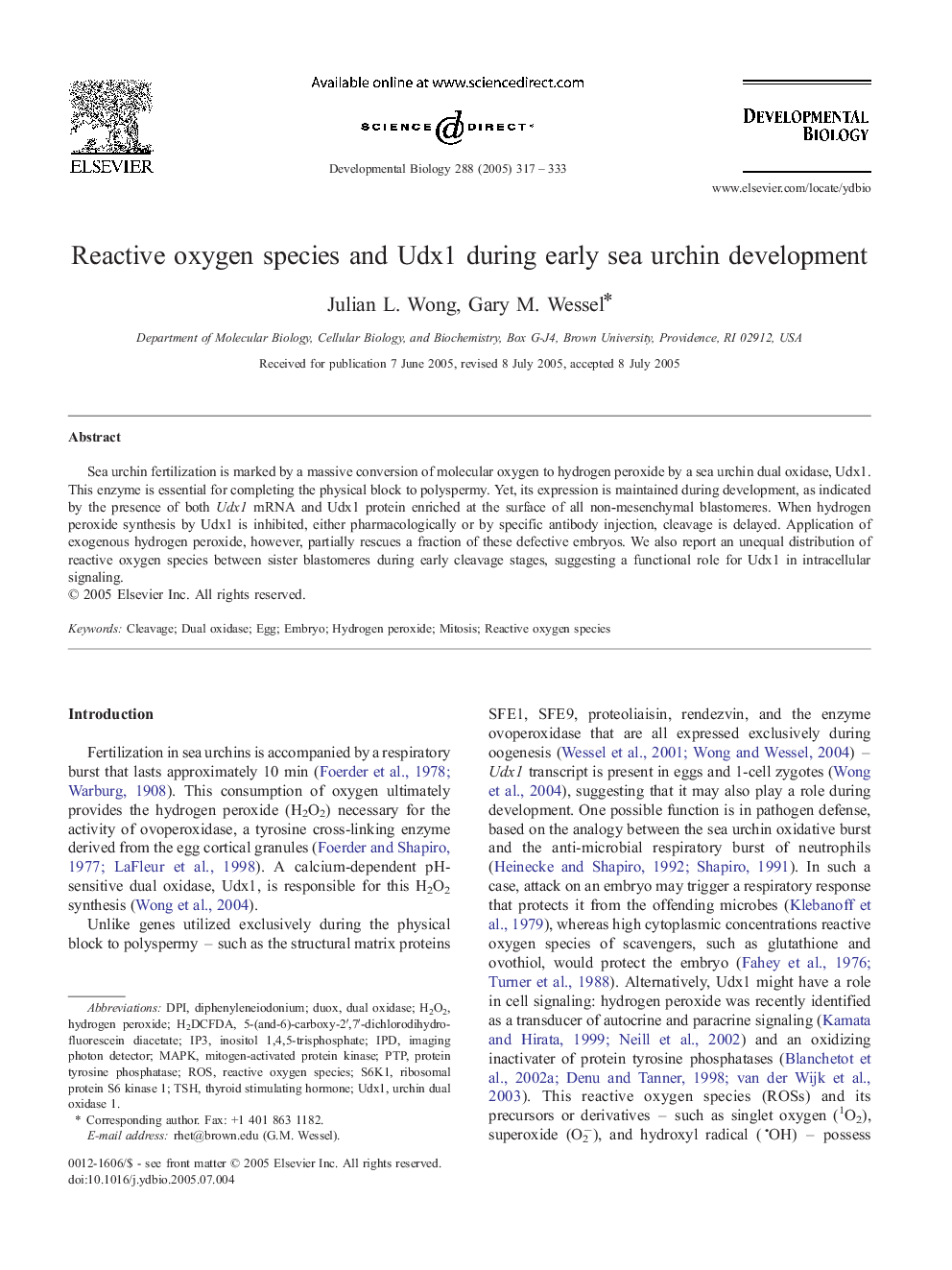| Article ID | Journal | Published Year | Pages | File Type |
|---|---|---|---|---|
| 10933989 | Developmental Biology | 2005 | 17 Pages |
Abstract
Sea urchin fertilization is marked by a massive conversion of molecular oxygen to hydrogen peroxide by a sea urchin dual oxidase, Udx1. This enzyme is essential for completing the physical block to polyspermy. Yet, its expression is maintained during development, as indicated by the presence of both Udx1 mRNA and Udx1 protein enriched at the surface of all non-mesenchymal blastomeres. When hydrogen peroxide synthesis by Udx1 is inhibited, either pharmacologically or by specific antibody injection, cleavage is delayed. Application of exogenous hydrogen peroxide, however, partially rescues a fraction of these defective embryos. We also report an unequal distribution of reactive oxygen species between sister blastomeres during early cleavage stages, suggesting a functional role for Udx1 in intracellular signaling.
Keywords
DPIIPDS6K1DUOXIP3TSHPTP5-(and-6)-carboxy-2′,7′-dichlorodihydrofluorescein diacetateH2DCFDAinositol 1,4,5-trisphosphateMAPKROSHydrogen peroxideCleavageEggEmbryodual oxidaseDiphenyleneiodoniumMitosisthyroid stimulating hormoneH2O2Protein tyrosine phosphatasemitogen-activated protein kinaseReactive oxygen species
Related Topics
Life Sciences
Biochemistry, Genetics and Molecular Biology
Cell Biology
Authors
Julian L. Wong, Gary M. Wessel,
